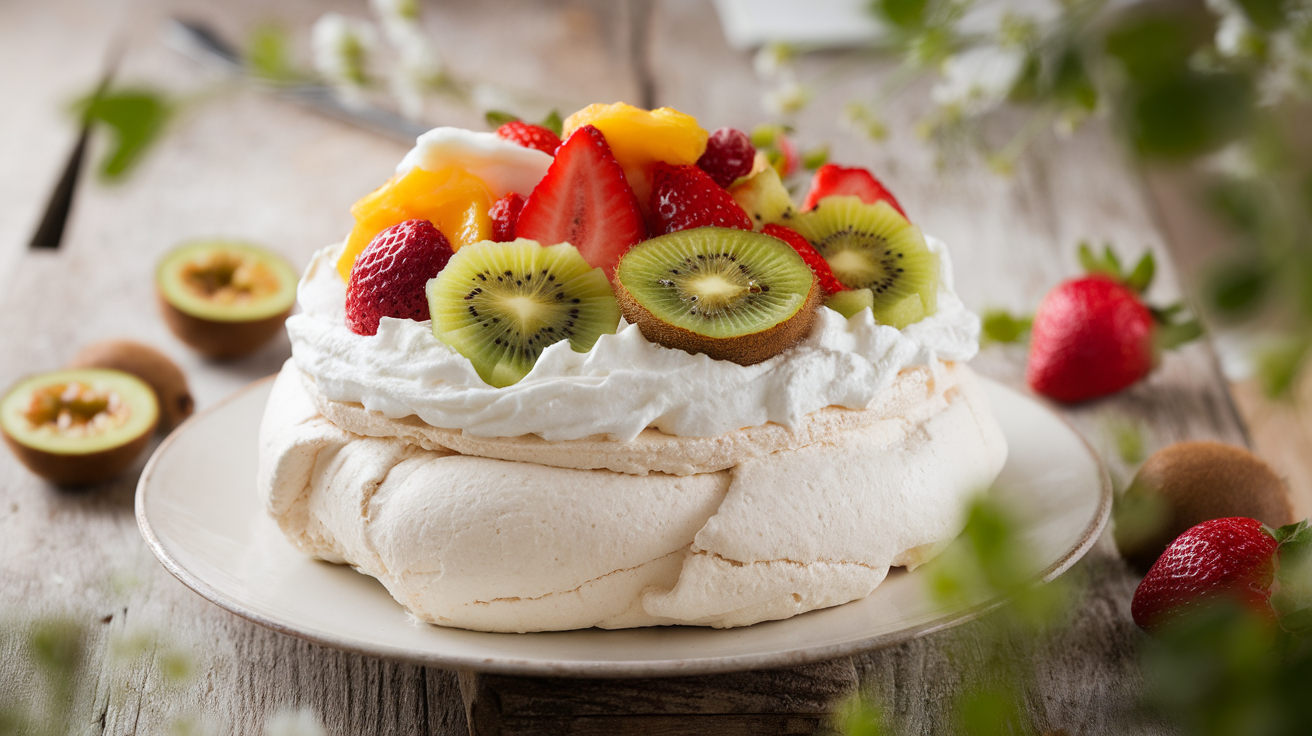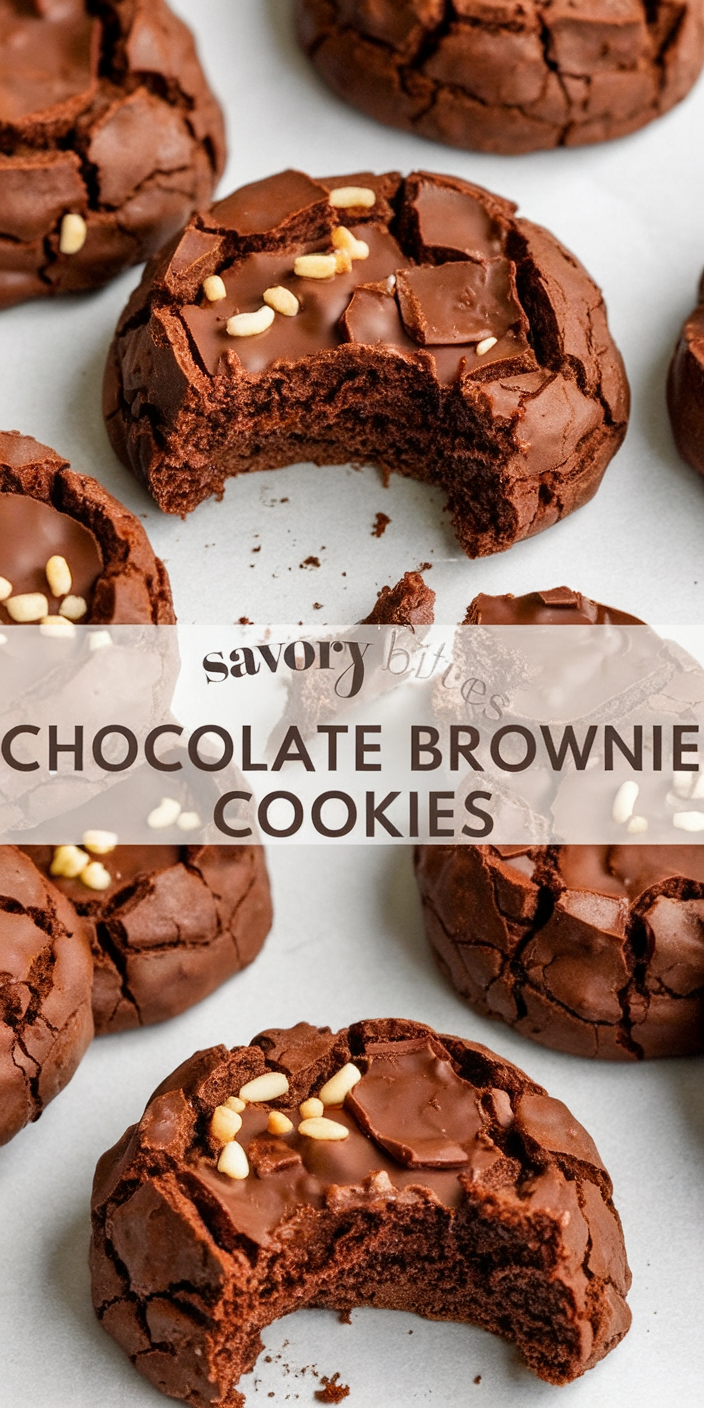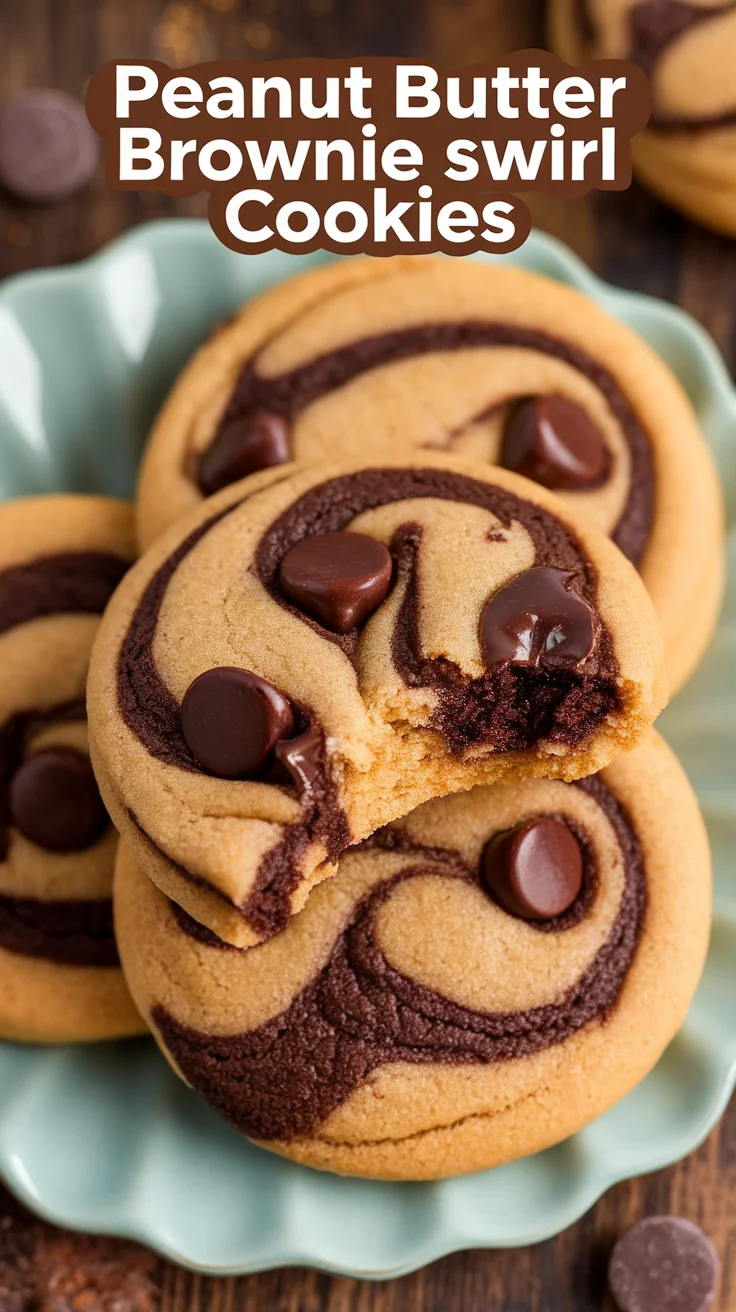If you’ve ever tasted a Pavlova, you’ll know that it’s one of those desserts that feel like a celebration in every bite — delicate yet indulgent, with a crisp exterior that gives way to a soft, marshmallow-like interior. Topped with clouds of whipped cream and fresh, vibrant fruits, Pavlova is a showstopper for any occasion. But beyond its beauty and taste lies a fascinating history and culinary science that make this dessert truly special.
Whether you’re a seasoned baker or a curious beginner, this comprehensive guide to the Classic Pavlova Recipe will take you through everything you need to know — from selecting the perfect ingredients, mastering the meringue technique, to creative serving ideas and troubleshooting tips. Let’s dive in and make a Pavlova that will wow your family, friends, and maybe even yourself!
What Is Pavlova?
Pavlova is a meringue-based dessert named after the Russian ballerina Anna Pavlova, who toured Australia and New Zealand in the 1920s. Both countries proudly claim to have invented this dish in her honor, though its exact origin remains a fun culinary mystery.
The dessert is distinguished by its unique texture contrast — a crisp, delicate shell with a tender, marshmallowy interior. This is achieved by whipping egg whites with sugar into a stiff, glossy meringue, then baking it low and slow to dry the outside while keeping the center soft. Once cooled, it’s generously topped with lightly sweetened whipped cream and colorful fresh fruits.
Ingredients Breakdown and Their Roles
Understanding each ingredient’s role helps you master the Pavlova:
- Egg Whites: The base of the meringue. Their proteins stretch and trap air when beaten, giving volume and structure.
- Caster Sugar: The fine sugar dissolves well, stabilizing the meringue and creating the crisp crust.
- Cornstarch (Cornflour): Helps to absorb moisture, giving Pavlova its marshmallowy center and preventing collapse.
- White Vinegar or Lemon Juice: The acid stabilizes the egg white foam and slows sugar crystallization.
- Vanilla Extract (optional): Adds a subtle aroma and flavor.
- Heavy Whipping Cream: Whipped to softness to complement the meringue with creamy richness.
- Fresh Fruit: Adds natural sweetness, color, and freshness.
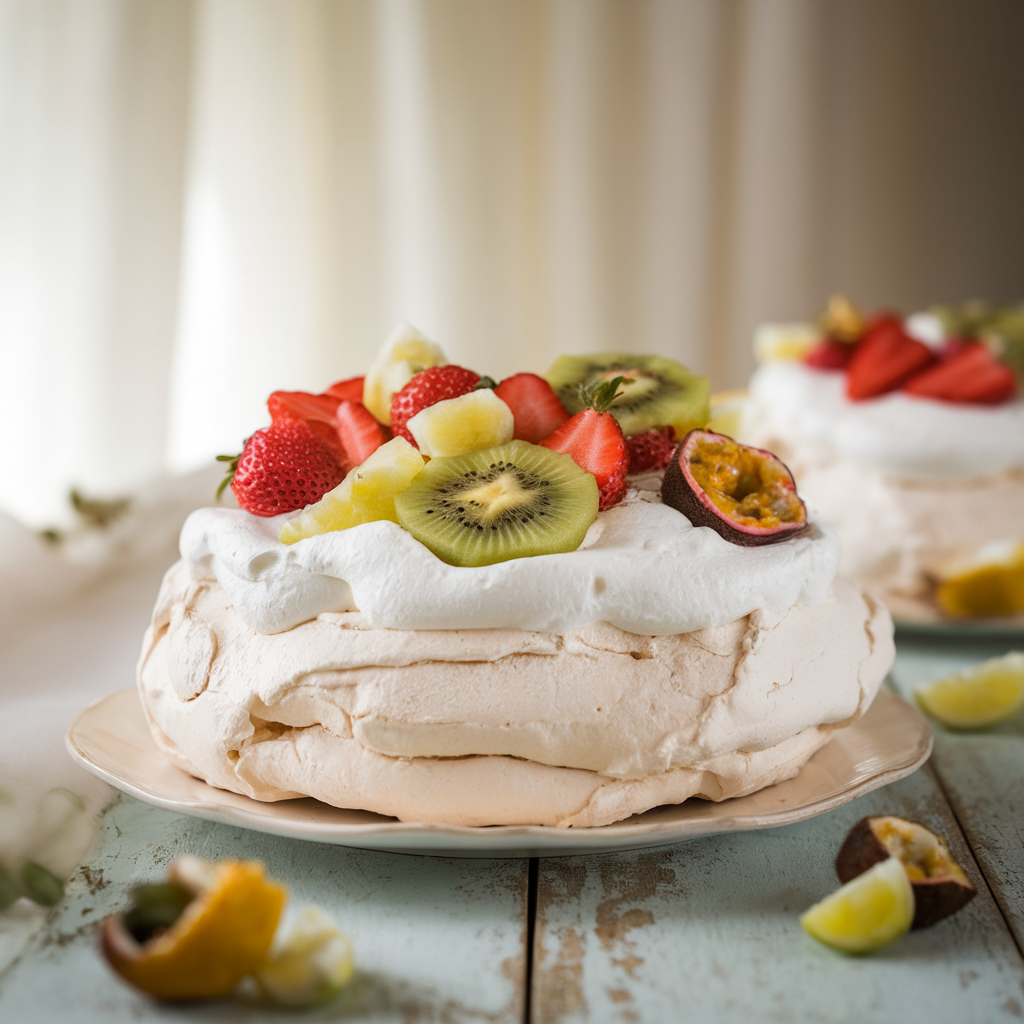
Step-by-Step Classic Pavlova Recipe
Step 1: Prepare Your Tools and Ingredients
- Use a clean, dry mixing bowl and beaters. Any grease or residue will stop egg whites from whipping properly.
- Ensure egg whites are at room temperature; they whip better and yield more volume.
- Préchauffer votre four à 250°F (120°C). Low heat is crucial for even drying.
Step 2: Whip the Egg Whites
- Start beating the egg whites at medium speed until soft peaks form — when the whites hold a gentle peak but curl over when you lift the beaters.
- Gradually add the caster sugar, about a tablespoon at a time, while beating at high speed. Adding sugar too quickly can deflate the mixture.
- Continue beating until stiff, glossy peaks form and the sugar has dissolved (test by rubbing a bit between your fingers to check for grit).
Step 3: Fold in Cornstarch, Vinegar, and Vanilla
- Gently fold in the cornstarch, vinegar, and vanilla using a spatula.
- Cornstarch gives the Pavlova its signature marshmallowy inside, while vinegar helps stabilize the meringue.
Step 4: Shape the Pavlova on Parchment Paper
- Line a baking sheet with parchment and draw a circle roughly 7-8 inches in diameter.
- Spoon the meringue inside the circle and shape it into a disc, making the edges slightly higher than the center (to hold cream and fruit later).
- You can create gentle peaks or swirls for a rustic look.
Step 5: Baking
- Immediately place the meringue in the oven and reduce the heat to 225°F (105°C).
- Bake for 1 hour 15 minutes to 1 hour 30 minutes until the outside is dry and crisp but still pale.
- Do not open the oven door during baking to avoid temperature fluctuations causing cracks.
- When done, turn off the oven and leave the Pavlova inside with the door slightly open to cool slowly overnight or for several hours.
Step 6: Prepare the Whipped Cream Topping
- Whip chilled heavy cream with powdered sugar and vanilla until soft peaks form.
- Be careful not to overbeat — soft, light whipped cream balances the sweetness and texture of the meringue.
Step 7: Assemble and Decorate
- Once the Pavlova is completely cool, carefully transfer it to a serving plate.
- Spread or pipe the whipped cream over the top.
- Decorate with fresh, colorful fruit like sliced kiwi, strawberries, blueberries, raspberries, passionfruit pulp, or any seasonal fruits.
- Optionally, drizzle with passionfruit syrup or a light dusting of cocoa powder for extra flavor.
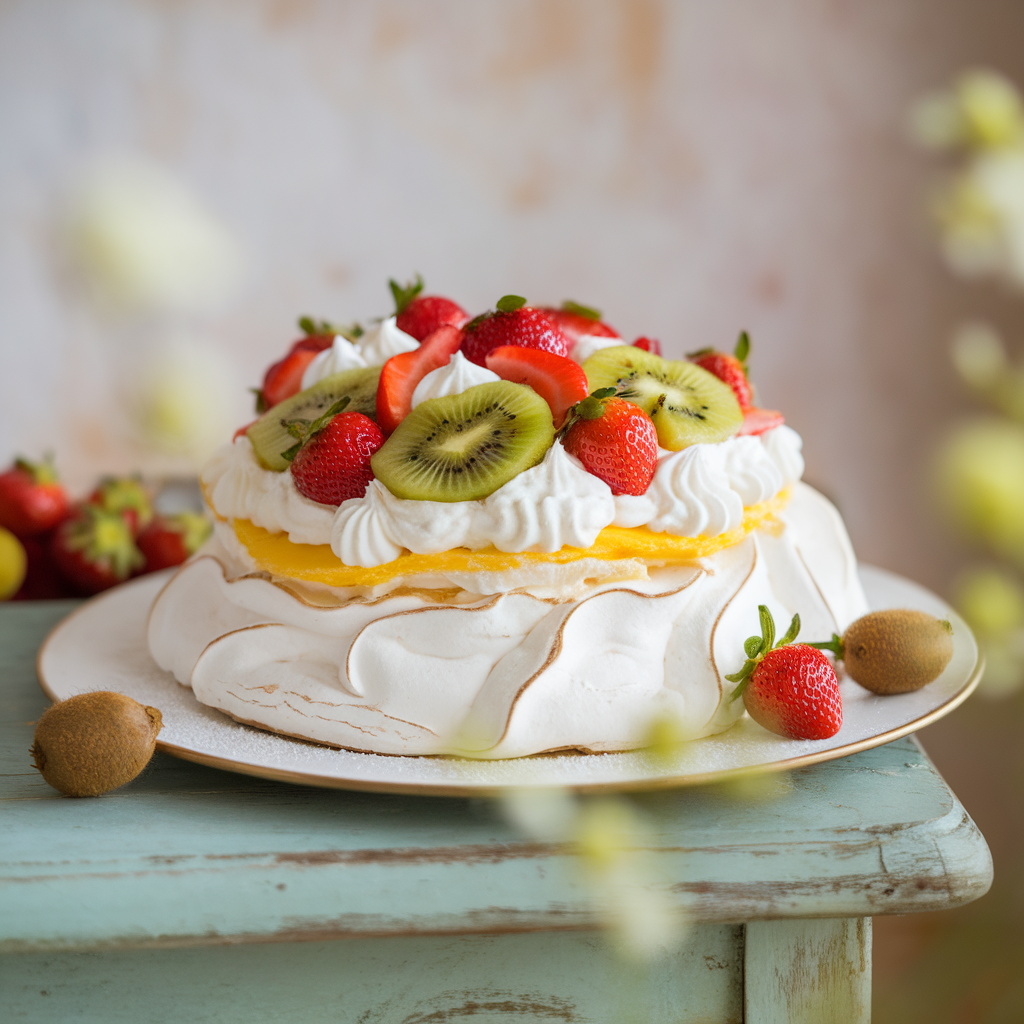
How to Make Pavlova Perfect Every Time: Expert Tips
- Room Temperature Egg Whites: Bring eggs out 30 minutes before starting.
- Sugar Quality: Use caster sugar for best dissolving; superfine sugar also works.
- Add Sugar Slowly: To avoid deflating your meringue.
- Cornstarch and Acid: Don’t skip these — they’re key for Pavlova’s texture.
- Use Parchment, Not Silicone: Silicone mats can cause the base to stick or brown unevenly.
- Avoid Humidity: Meringue hates moisture, so pick a dry day for baking.
- Cool Slowly: Rapid cooling causes cracks.
- Assemble Just Before Serving: To keep the meringue crisp longer.
Creative Pavlova Variations and Serving Ideas
1. Chocolate Pavlova
Add 2 tablespoons of cocoa powder sifted into the meringue for a chocolate twist. Top with whipped cream and raspberries for a decadent treat.
2. Lemon & Berry Pavlova
Add lemon zest into the meringue and top with lemon curd and fresh mixed berries. The citrus cuts through the sweetness beautifully.
3. Mini Pavlovas
Spoon small rounds of meringue onto a baking tray to create individual Pavlovas — perfect for parties or portion control.
4. Tropical Pavlova
Use mango, passionfruit, and shredded coconut for a tropical flavor explosion.
5. Pavlova Torte
Layer multiple meringue discs with cream and fruit between each layer for a dramatic layered cake.
The Science Behind Pavlova’s Texture
Pavlova’s texture is all about the proteins in egg whites. When whipped, these proteins unfold and trap air, forming a foam. Sugar dissolves in the water of the egg whites and strengthens the foam by slowing down the movement of proteins, stabilizing the structure.
Cornstarch absorbs moisture during baking, which is crucial. It creates a soft, marshmallow-like center rather than a hard, dry meringue interior. The acid (vinegar or lemon juice) lowers the pH, helping egg proteins bond more firmly and slowing sugar crystallization.
The low, slow baking dries the outside to a crisp shell while gently setting the inside. Slow cooling prevents cracking by avoiding temperature shock.
Common Pavlova Problems and How to Fix Them
| Problem | Cause | Solution |
|---|---|---|
| Cracked Pavlova | Oven temperature too high or rapid cooling | Bake at low temp and cool slowly inside oven |
| Weeping (liquid) | Meringue not baked long enough or too humid | Bake longer, avoid humidity, store in airtight container |
| Meringue collapsed | Sugar added too quickly or egg whites not stiff | Add sugar gradually, beat egg whites to stiff peaks |
| Sticky or soft exterior | Humidity or underbaked | Bake longer, avoid humid days |
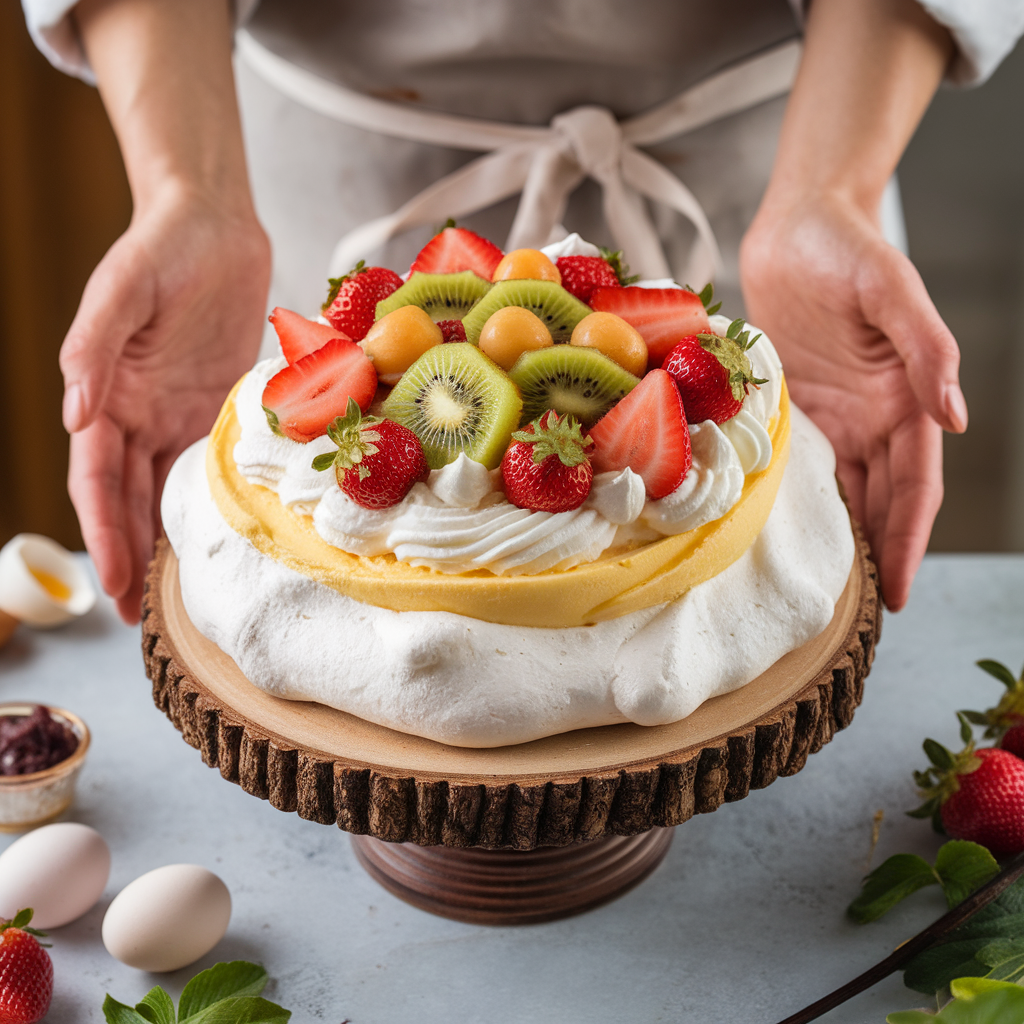
When to Serve Pavlova
Pavlova is often associated with summer celebrations, especially Christmas in Australia and New Zealand. Its lightness and fresh fruit toppings make it ideal for warm weather. However, it also shines at any event where a light but stunning dessert is desired — birthdays, dinner parties, weddings, or festive brunches.
Cultural Significance
In both Australia and New Zealand, Pavlova is more than just a dessert; it’s a cultural icon. Families often pass down Pavlova recipes through generations, tweaking and perfecting their own versions. The dessert symbolizes the elegance and lightness of the ballerina it’s named after and has been featured in cookbooks and menus worldwide.
Nutritional Overview
Pavlova is relatively low in fat but high in sugar and carbohydrates, mainly from sugar and fruit. The whipped cream adds richness and calories, so moderation is key. Fresh fruit balances the sweetness with vitamins and fiber.
Full Classic Pavlova Recipe Recap
Ingrédients
Meringue:
- 4 large egg whites (room temp)
- 1 cup (200g) caster sugar
- 1 teaspoon white vinegar or lemon juice
- 1 cuillère à soupe de fécule de maïs
- 1 teaspoon vanilla extract (optional)
Topping:
- 1 cup (240ml) heavy whipping cream, chilled
- 2 tablespoons powdered sugar
- 1 cuillère à café d'extrait de vanille
- Fresh fruit (kiwi, strawberries, passionfruit, blueberries, raspberries)
Instructions
- Preheat oven to 250°F (120°C). Line a baking tray with parchment paper and draw a 7-8 inch circle.
- Beat egg whites to soft peaks. Gradually add sugar, beating to stiff, glossy peaks.
- Fold in vinegar, cornstarch, and vanilla gently.
- Shape meringue inside circle, edges slightly higher.
- Bake for 1 hr 15-30 min at 225°F (105°C).
- Turn off oven; cool inside with door slightly open.
- Whip cream with powdered sugar and vanilla to soft peaks.
- Spread cream on cooled Pavlova; top with fresh fruit.
- Serve immediately.
How to Store Pavlova
- Store baked Pavlova base uncovered in an airtight container at room temperature for up to 2 days.
- Do not refrigerate the baked meringue base, or it will absorb moisture and lose crispness.
- Once topped with cream and fruit, keep refrigerated and consume within 1 day.
Foire Aux Questions
Q: Can I freeze Pavlova?
A: You can freeze the baked meringue base in an airtight container for up to a month. Thaw at room temperature and top with cream and fruit before serving.
Q: Why is my Pavlova sticky?
A: Usually due to underbaking or humid conditions. Bake longer and avoid making Pavlova on very humid days.
Q: Can I make Pavlova without cornstarch?
A: It’s possible but cornstarch helps achieve the perfect soft interior. Without it, the inside tends to be fully crisp.
Final Words
Mastering the Classic Pavlova Recipe is a rewarding baking achievement that combines art and science. Its ethereal texture and vibrant presentation have captivated dessert lovers for nearly a century. With this guide, you have the tools to create a stunning, delicious Pavlova that’s sure to become a favorite in your recipe collection.
Remember, Pavlova is as much about the joy of creating as it is about enjoying. Don’t be afraid to experiment with flavors and toppings — the sky’s the limit!
Happy baking!
